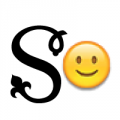Z and 7 with a stroke

Vasil Stanev
Posts: 787

What do you think of adding a bar to the waist of Z and 7? Quaint or not?
0
Comments
-
Grandfathered in handwriting. Tendency is to simplify everything. Depends on your design idea of the complete font. For technical purposes or maps it's maybe better readable.
That's what I learned at school:
Now both forms of r are allowed and the shape is simpler, stroke in 7 and Z still there:
2 -
(Beyond handwriting fonts) I’d only consider it in modulated designs in which the diagonal is a hairline.0
-
I have introduced this aspect into a few of my recent futuristic fonts.
But, only because it enhanced the overall aspect of my unique new typeface—the concept works particularly well here only because of all the other decorative design elements within the font.
Decrypt 02
0 -
I think a crossed 7 is a very European thing. I was always thinking of making a handwriting font with locl for every language: r, 7, 1, z, etc., or maybe even swapping the whole alphabet for one based on the kindergarten exemplars from each country.In the least, we could make a handwriting locl wiki!Note: crossed Z in Polish often, if not always, means Ż.1
-
I always thought it was to distinguish it in commercial fast handwriting from a 1. The paper may be greasy or whatnot and merchants are seldom master penmen, so the numbers need to be easily destinguished even if they are ugly.Adam Jagosz said:I think a crossed 7 is a very European thing.
Also there was an grandpa joke about it being the number of 7th Commandment, so one must never steal the bar. 0
0 -
Those two ideas are related, as (in my understanding) European ones are often written with a much more exaggerated (potentially seven-like) flag than American ones (which often have no flag at all).Vasil Stanev said:
I always thought it was to distinguish it in commercial fast handwriting from a 1.Adam Jagosz said:I think a crossed 7 is a very European thing.1 -
 I still have this image from a previous conversation on the topic. One might say "don't let things get this bad and you won't need it" but it will seldom hurt.
I still have this image from a previous conversation on the topic. One might say "don't let things get this bad and you won't need it" but it will seldom hurt.
1 -
Some of those L (especially) and Z forms are questionable for a script. A cross on the Z seems like it might help, but clearer forms would be better.3
-
I'd say it goes further: if the Polish reality can be extrapolated to the rest of continental Europe, the digit one has an intrinsic flag, and seven — an intrinsic bar. It's not something added as an afterthought, it's the way it's being taught*. Just like we don't write the letter a with two stories in handwriting (though this I have seen in an Italian's handwriting, but failed to ask whether it was the way to go in Italy or he was just being funky).I often write one the American way (Brits don't do that as well? may we say Anglophone?) when writing fast a lot of numbers starting with one (common scenario) but would never write it like that for someone else in Poland to read.* The flag starting at baseline or even below is done when writing fast. Not the way it's being taught.0
-
I always design the Z and z without a stroke otherwise how are they disambiguated from the unicode characters $01B5 and $01B6 (Zstroke and zstroke).
0 -
In this train of thought, lowercase f must be always designed without a descender in italics. Otherwise how is it disambiguated from fhook? (Which, by the way, an awful lot of fonts implement as the florin symbol, not compatible with lowercase; which is more important: a currency symbol used in territories populated by 310,000 or an orthographic letter used by 6.5 million? Maybe a locl feature would do?)Takeaway: all depends on your audience. Any living languages using Zstroke?(I suppose we are talking about display and script fonts only as for crossed Z.)0
-
@Adam Jagosz Which current language uses a hooked lowercase f?0
-
Making a proper fhook is probably only meaningful if you include everything else in the African Reference Alphabet.
3 -
Which languages use Zstroke and zstroke ?
0 -
> Making a proper fhook is probably only meaningful if you include everything else in the African Reference Alphabet.In general, yes, but.I did a lot of (poorly documented and inconsistent) research that led me to believe it is less essential to design ɑ ʌ ƈ ç đ ǝ ɦ ɩ ɟ λ ɴ ŋ ƥ ɽ ʃ ƭ ʈ θ ꞷ ƹ, as opposed to ɓ ɗ ɖ ɛ ƒ ɠ ɣ ƙ ɲ ɔ ʋ ƴ ʒ ʔ.https://docs.google.com/spreadsheets/d/14JzBM8PWKjdXK_hnyY-uizLVOKtxf0dba6tum8Pq9Gk/edit?usp=sharing(Disclaimer: IANALinguist.)3
-
Which languages use Zstroke and zstroke ?I'm not aware of any current, official orthographies that use Ƶ/ƶ, but recall that it occurred in the short-lived Chechen script reform from 1992.0
-
You probably know this, John.
Polish sometimes displays the ƶ (slashed z), but it's technically a ż (z with dot above).
Edit: Apologies. This was mentioned above previously by Adam Jagosz.0 -
As noted upthread, Zstroke is an allograph of Zdot in Polish. Presumably plain Z needs to be differentiated from it in this and only this circumstance.And of course Greek Zeta must be without a stroke lest it be taken for Xi, but this is easy because it has its own encoding.1
-
Paul Hanslow said:Polish sometimes displays the ƶ (slashed z), but it's technically a ż (z with dot above).Good to restate it, Paul, as I had trouble myself finding my mention of this above.I'd say the crossed Z for Ż has main use in comic book fonts*, I think it's just part of the style. Note the characteristic backslant and the kreska, which is also crossing the letter. And the straight slash of the ogonek.

 All this is by no means mandatory as a lot of new comics use western fonts. Unfortunately I failed to identify the font above at this time, but I might ask around. This is a very typical font here in Poland to give the comics their comic looks. Perhaps it's a localized version of a western font.For some reason I had a connotation of a crossed Ż in STRAŻ POŻARNA (firefighters) but a quick search revealed that it must have been just a false impression that stuck in my head incidentally.* Or in the comic book font? TBD. But also happens in hand lettering, if someone still does that — as you can see in the third frame of the first, cropped, picture.0
All this is by no means mandatory as a lot of new comics use western fonts. Unfortunately I failed to identify the font above at this time, but I might ask around. This is a very typical font here in Poland to give the comics their comic looks. Perhaps it's a localized version of a western font.For some reason I had a connotation of a crossed Ż in STRAŻ POŻARNA (firefighters) but a quick search revealed that it must have been just a false impression that stuck in my head incidentally.* Or in the comic book font? TBD. But also happens in hand lettering, if someone still does that — as you can see in the third frame of the first, cropped, picture.0 -
That comic looks like a font, but the diacritics look to be added by hand - they are slightly different from letter to letter.2
-
I included some localized handwriting letters in my FF Uberhand. Though not all possible variants, as it is not a connected script. You can see some examples in the user manual: https://www.kutilek.de/ff-uberhand/ff-uberhand-user-manual.pdf1
-
I took a virtual trip through Warsaw courtesy of Google Maps and found very intersting signs, including this:
and found very intersting signs, including this: This is the only kind of international trip I can do with the whole quarantine situation, unfortunately.
This is the only kind of international trip I can do with the whole quarantine situation, unfortunately. 
0 -
Of course, one doesn't have to be Polish to see why Z with a dot above is sometimes replaced with Z with a horizontal stroke. Given that comic book lettering is written with a pen drawing a thin line, and comics are poorly printed on newsprint (well, at least historically), a dot might easily end up not being visible; the stroke is more noticeable and thus likely to survive vicissitudes.
0 -
Paul Miller said:I always design the Z and z without a stroke otherwise how are they disambiguated from the unicode characters $01B5 and $01B6 (Zstroke and zstroke).
a and g must be always designed as a double story. Otherwise how is it disambiguated from ɑ and ɡ?Adam Jagosz said:In this train of thought, lowercase f must be always designed without a descender in italics. Otherwise how is it disambiguated from fhook?
~ must be designed neither in the centered form nor the accented form. Otherwise how is it disambiguated from ˜ or ∼?
` and ´ must be always designed differently from the accented forms. Otherwise how is it disambiguated from ˋ and ˊ?
0 -
@Piotr Grochowski This really depends on the scope of the fonts. If the font is meant for a specific market, then it’s fine to design it in a way that doesn’t meet all the requirements of other markets. But it’s important to be aware of those limitations in case the font will have some extension in the future to cover more.In many cases, those preferences (regional or educational) can be addressed with features like locale variants or stylistic variants.
0
Categories
- All Categories
- 46 Introductions
- 3.9K Typeface Design
- 487 Type Design Critiques
- 564 Type Design Software
- 1.1K Type Design Technique & Theory
- 656 Type Business
- 861 Font Technology
- 29 Punchcutting
- 520 Typography
- 119 Type Education
- 324 Type History
- 77 Type Resources
- 112 Lettering and Calligraphy
- 33 Lettering Critiques
- 79 Lettering Technique & Theory
- 558 Announcements
- 94 Events
- 114 Job Postings
- 170 Type Releases
- 179 Miscellaneous News
- 276 About TypeDrawers
- 54 TypeDrawers Announcements
- 120 Suggestions and Bug Reports









